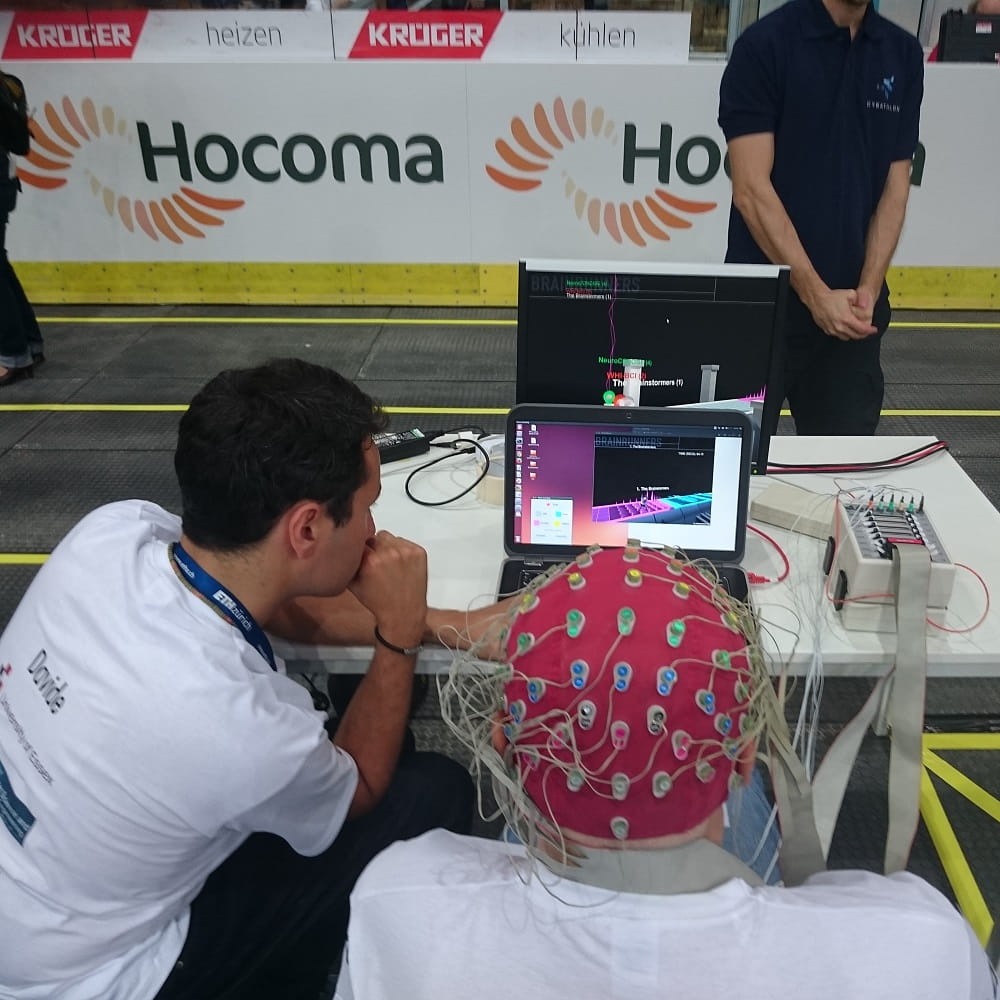Highlights of our research
In the area of BCI-assisted decision-making the lab has obtained funding from the UK Ministry of Defence since 2013, with MoD currently funding projects ongoing until 2021. For instance, the lab is a leading partner of a two prestigious grant jointly funded by the UK Ministry of Defence and the US Department of Defence. This first of these is a 5-year project under US Multidisciplinary University Research Initiative (MURI), entitled “Understanding and Enhancing Decision Making in Multisensory Environments”.
The second project is a 3-year project entitled “Adaptive joint cognitive systems for complex and strategic decision making: building trust in human-machine teams through brain-computer-interface augmentation, social interaction and mutual learning”, supported by the Bilateral Academic Research Initiative (BARI) programme. These activities are in partnership with the University of Southern California, the University of California Berkeley, Harvard University, New York University, Cold Spring University of California Los Angeles, Imperial College London, University College London, Oxford University, Harvard Medical School and the University of Massachusetts Medical School.
Additional research highlights include:
- Simis Perdikis presented the first BCI-based therapy for stroke rehabilitation shown to deliver clinically significant and lasting outcome.
- Reini Scherer made significant contributions to gaining a deeper understanding of mechanisms of brain rhythms and their interpretation in the context of motor behaviour.
- Within the areas of neuroergonomics and adaptive neuro-technologies, Reini Scherer is among the few researchers world-wide studying online man-machine co-adaptation.
- Ana Matran-Fernandez and Francisco Sepulveda participated in the international Cybathlon 2016, the first international BCI competition for people with disabilities, and attained third place.
- The group has also done significant work in neuromuscular control of robotic prostheses (Citi, Matran-Fernandez, Sepulveda, Poli) in collaboration with world-leading partners (including neurophysiologists, hand-surgeons and bioengineers) within the DeTOP and SenseBack projects.
- Luca Citi was part of the research team showing for the first time that an amputee could touch and feel with a sensory-enhanced prosthetic hand surgically wired to nerves in his upper arm. The pioneering experiment was published in Science Translational Medicine and widely reported in the world media including the BBC, The Guardian, The Independent, and New Scientist.







